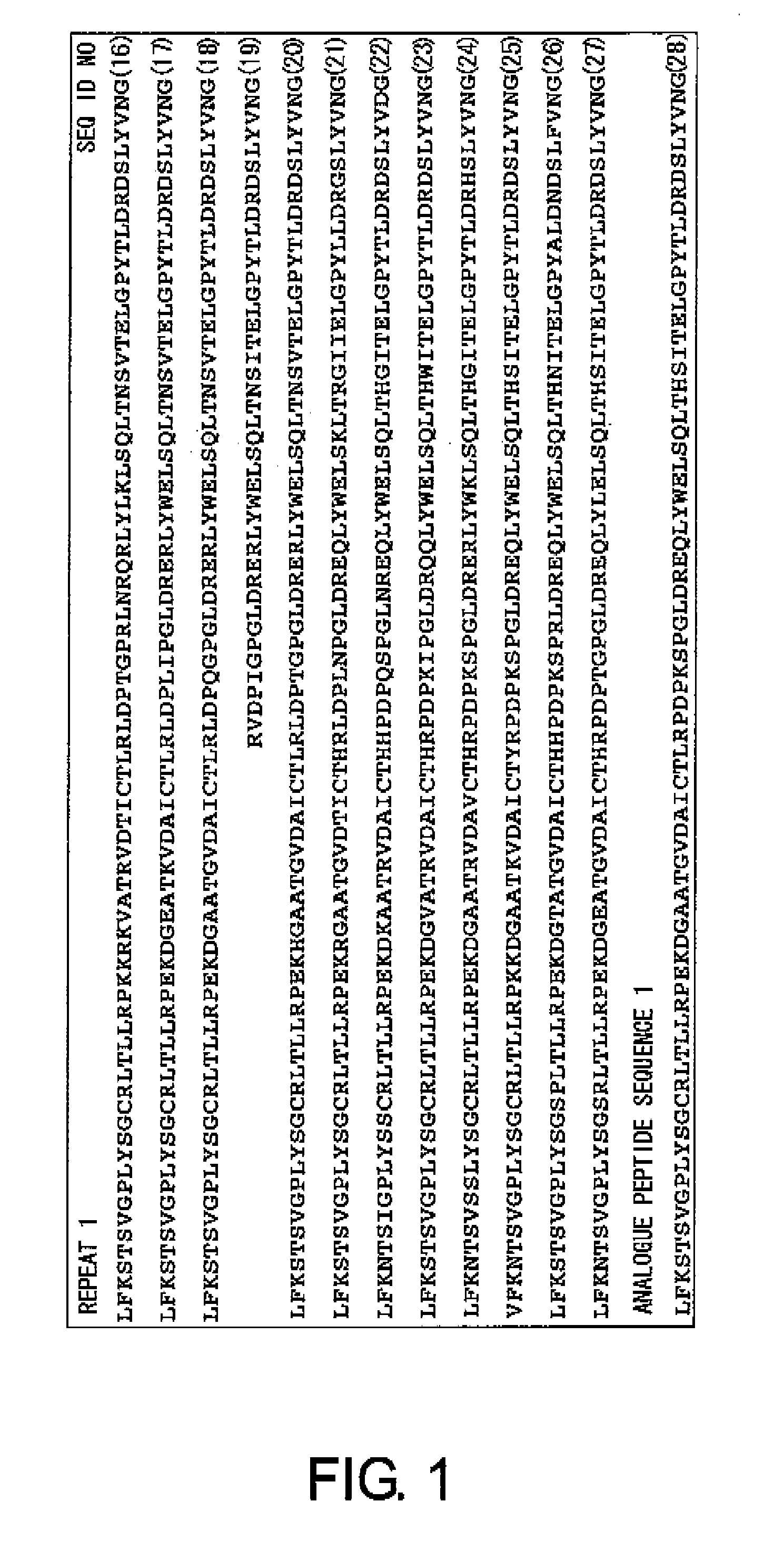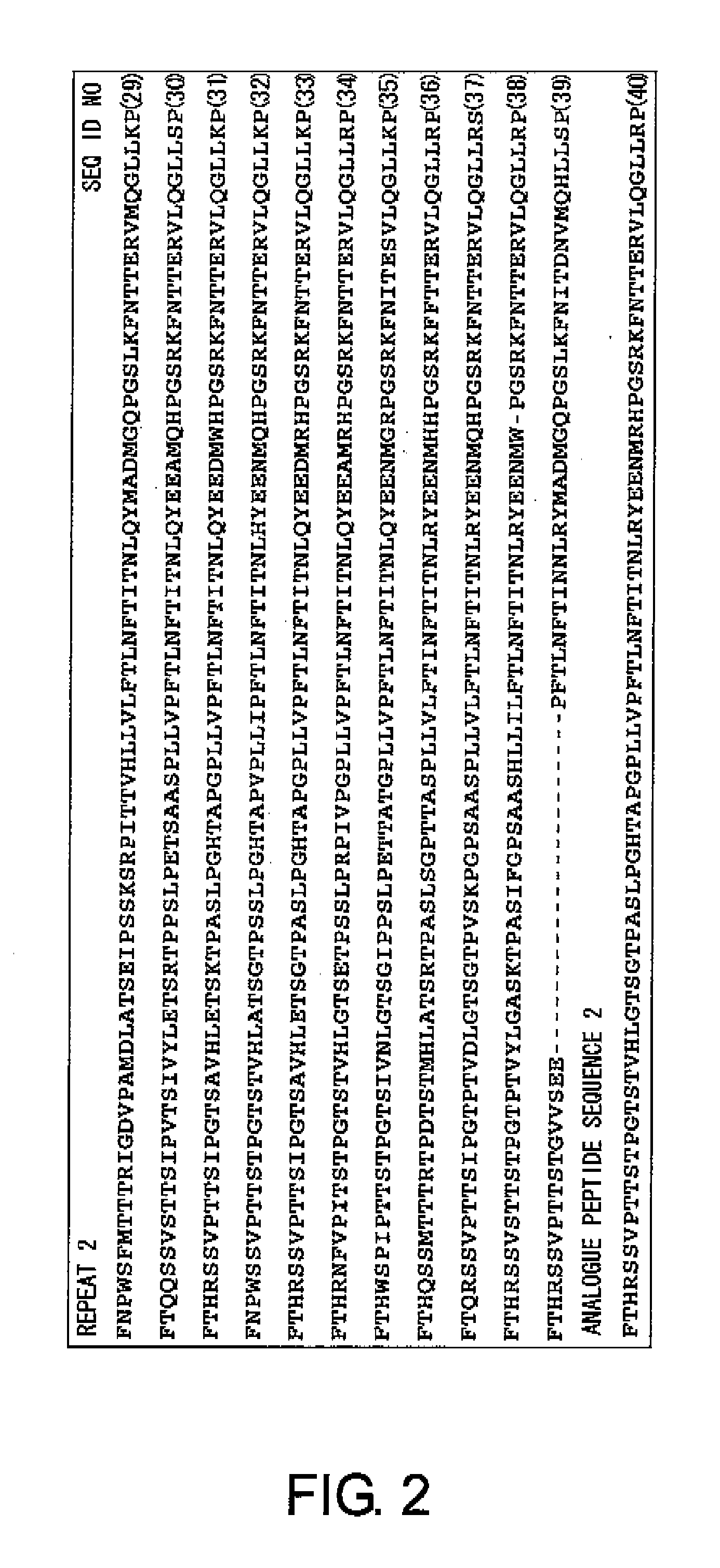Cancer-associated antigen analogue peptides and uses thereof
an analogue peptide and cancer-associated technology, applied in the field of cancer-associated antigen analogue peptides, can solve the problems of poor prognosis when conventional treatment is used, and achieve the effect of improving long-term prognosis and suppressing recurren
- Summary
- Abstract
- Description
- Claims
- Application Information
AI Technical Summary
Benefits of technology
Problems solved by technology
Method used
Image
Examples
example 1
Analysis of the Presence or Absence of T Cell Fractions Required for Cell Therapy in a Patient's Peripheral Blood After Chemotherapy with Anti-Cancer Agents
[0160]Anti-cancer agents have the side effects of immune suppression or bone marrow suppression. Chemotherapy against ovarian cancers may cause changes in the cellular fractions in a patient's peripheral blood, and particularly, may reduce T cell number. Therefore, the cellular fractions contained in the blood samples of six patients were analyzed, where the blood samples had been taken on the day the peripheral leukocyte number had returned to normal values following chemotherapy with anti-cancer agents (after an average of 14 days). The blood samples were fluorescently immunostained using monoclonal antibodies (Fujisawa Pharmaceutical Co., Tokyo, Japan) against CD3 (general T cells), CD4 (helper T cells), CD8 (cytotoxic T cells), CD25 (activated T cells), CD45RA (naive T cells), CD4RO (memory T cells), CD 14 (monocytes), and CD...
example 2
Design of Analogue Peptides
[0163]CA125 was reported as the name of an antigen recognized by a monoclonal antibody prepared by Bast R C Jr. et al. in 1981 by immunizing mice with an ovarian cancer cell line antigen (Bast R C, Penney M, Lazarus H, Reactivity of a monoclonal antibody with human ovarian carcinoma, J Clin Invest. 68:1331-1337, 1981). In all ovarian, cancers, the positive rate for CA125 is about 70%, and in serous adenocarcinoma cell type, which is the most frequently seen in ovarian cancers, the positive rate is as much as about 90%. The absolute amount of CA125 characteristically increases with the progress of the cancer, and CA125 has been used as the most characteristic tumor marker for ovarian cancer cells. However, its molecular structure was only revealed quite recently. The amino acid sequence of the full-length CA125 is shown as SEQ ID NO: 45. CA125 is a protein to which sugar chains have been added, and it is one of the macromolecules called mucin. The core prot...
example 3
Detection of Ovarian Cancer Antigen-Specific CD4-Positive T Cells
[0166]Antigen-specific T cells are known to produce IFNγ or IL-4 when activated (Fujiwara H., Immune response of T cells, Immunology of T cell system, pp. 155-174, written and edited by Fujiwara H., Chugai Igaku, Tokyo, 1993). When a T cell expressing IL-4 or IFNγ is detected after addition of ovarian cancer antigen MUC16 analogue peptide to a mononuclear cell fraction comprising T cells and stimulation by culturing, this serves as evidence of the presence of MUC16 antigen-specific T cells, and at the same time it means that the ovarian cancer antigen MUC16 analogue peptide comprises an epitope for T cells. However, when none of the ovarian cancer antigen MUC16 analogue peptides can activate the T cells, it means there are no MUC16 antigen-specific T cells.
[0167]In the preliminary experiment on six cases, CD4-positive / IL-4-positive cells were detected for a range between OVCA8 and OVCA14 among the 48 analogue peptides....
PUM
| Property | Measurement | Unit |
|---|---|---|
| Fraction | aaaaa | aaaaa |
| Fraction | aaaaa | aaaaa |
| Frequency | aaaaa | aaaaa |
Abstract
Description
Claims
Application Information
 Login to View More
Login to View More - R&D
- Intellectual Property
- Life Sciences
- Materials
- Tech Scout
- Unparalleled Data Quality
- Higher Quality Content
- 60% Fewer Hallucinations
Browse by: Latest US Patents, China's latest patents, Technical Efficacy Thesaurus, Application Domain, Technology Topic, Popular Technical Reports.
© 2025 PatSnap. All rights reserved.Legal|Privacy policy|Modern Slavery Act Transparency Statement|Sitemap|About US| Contact US: help@patsnap.com



